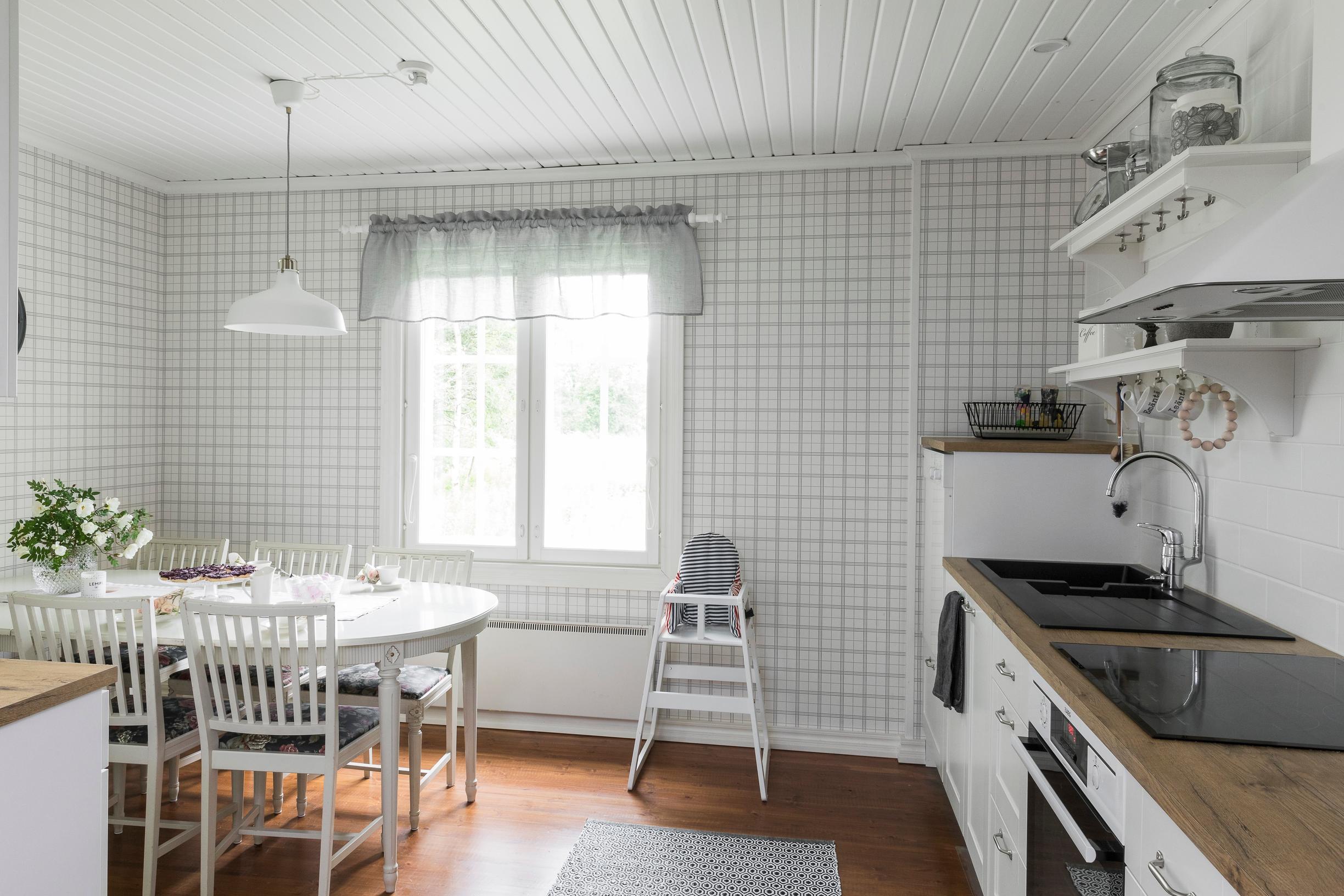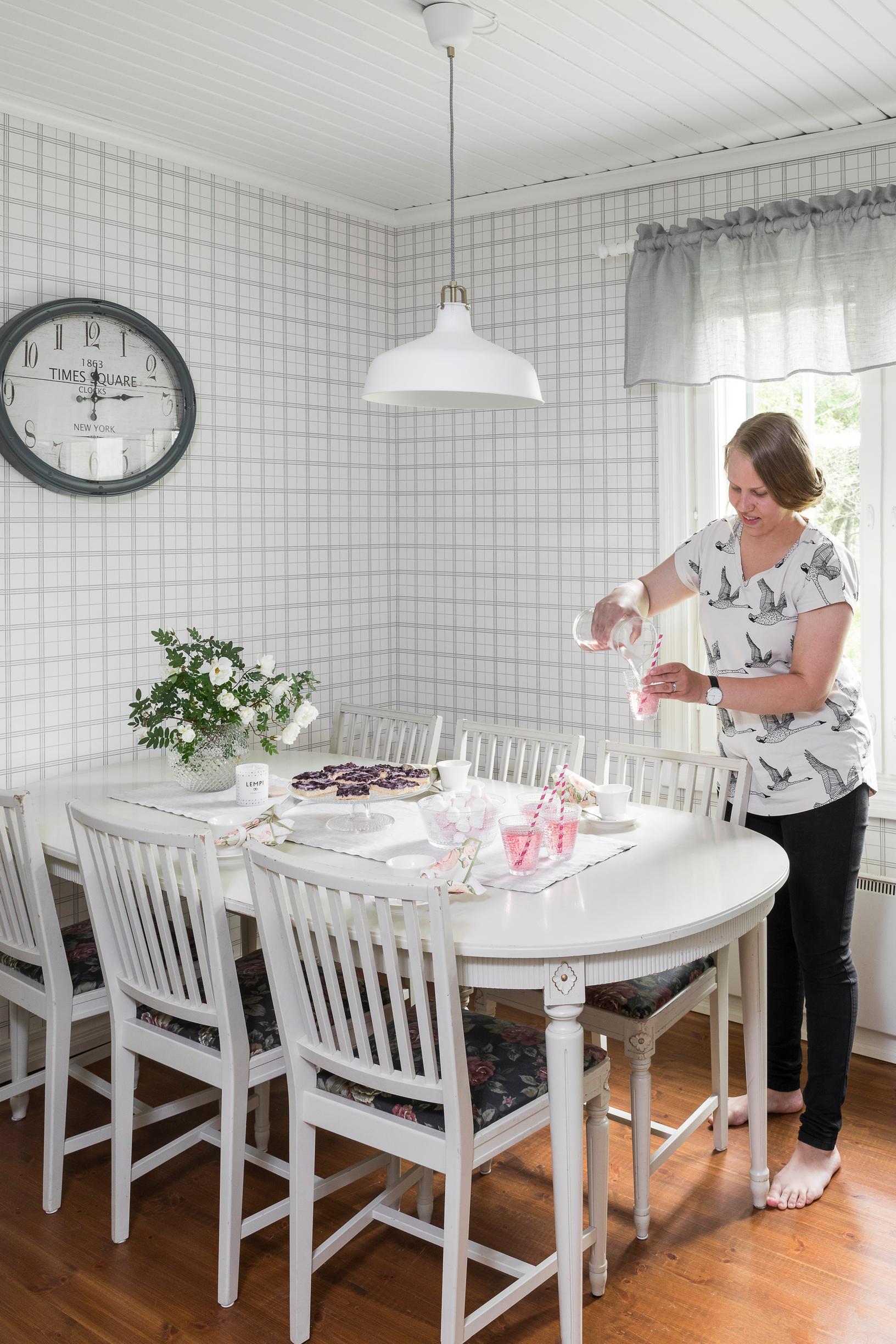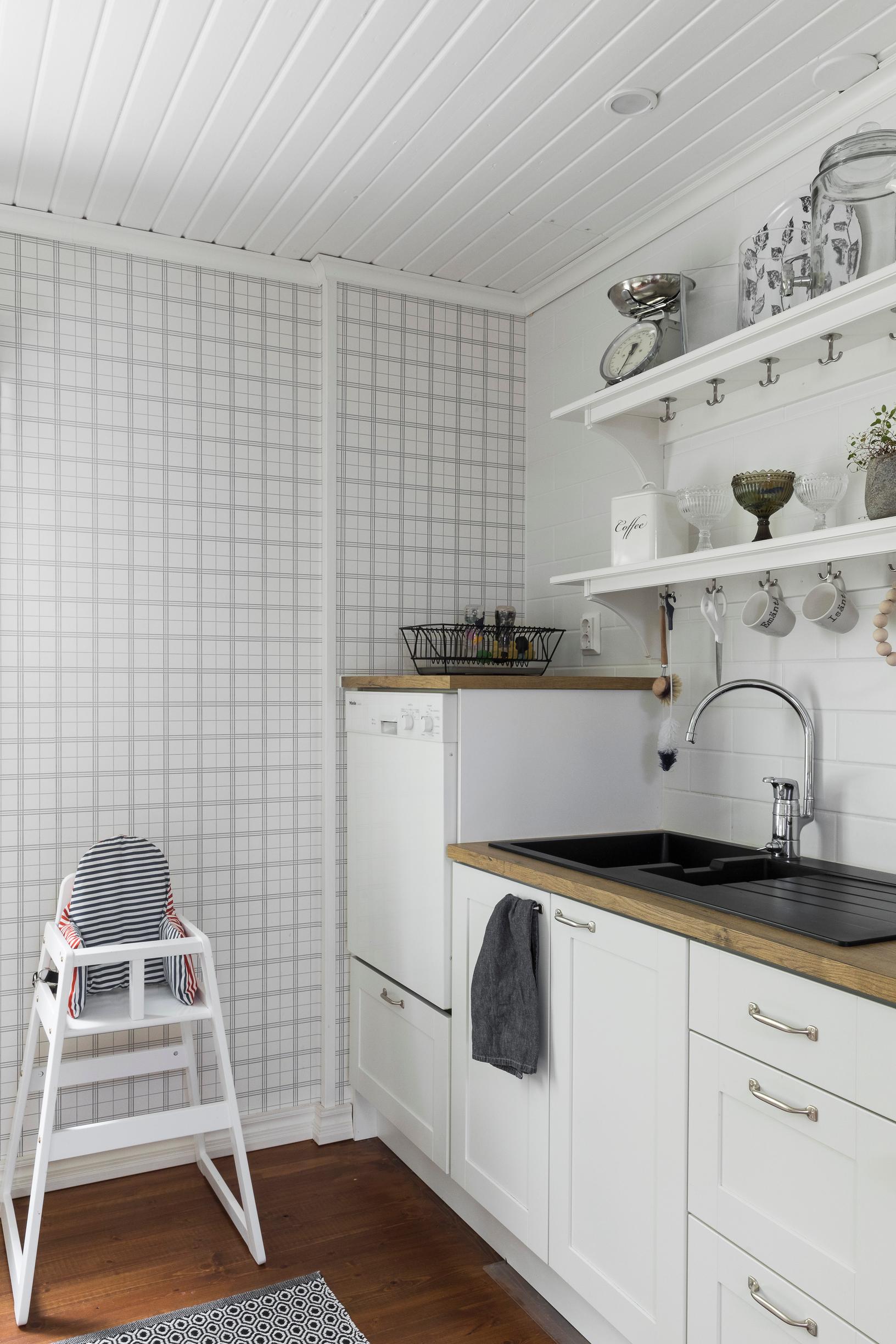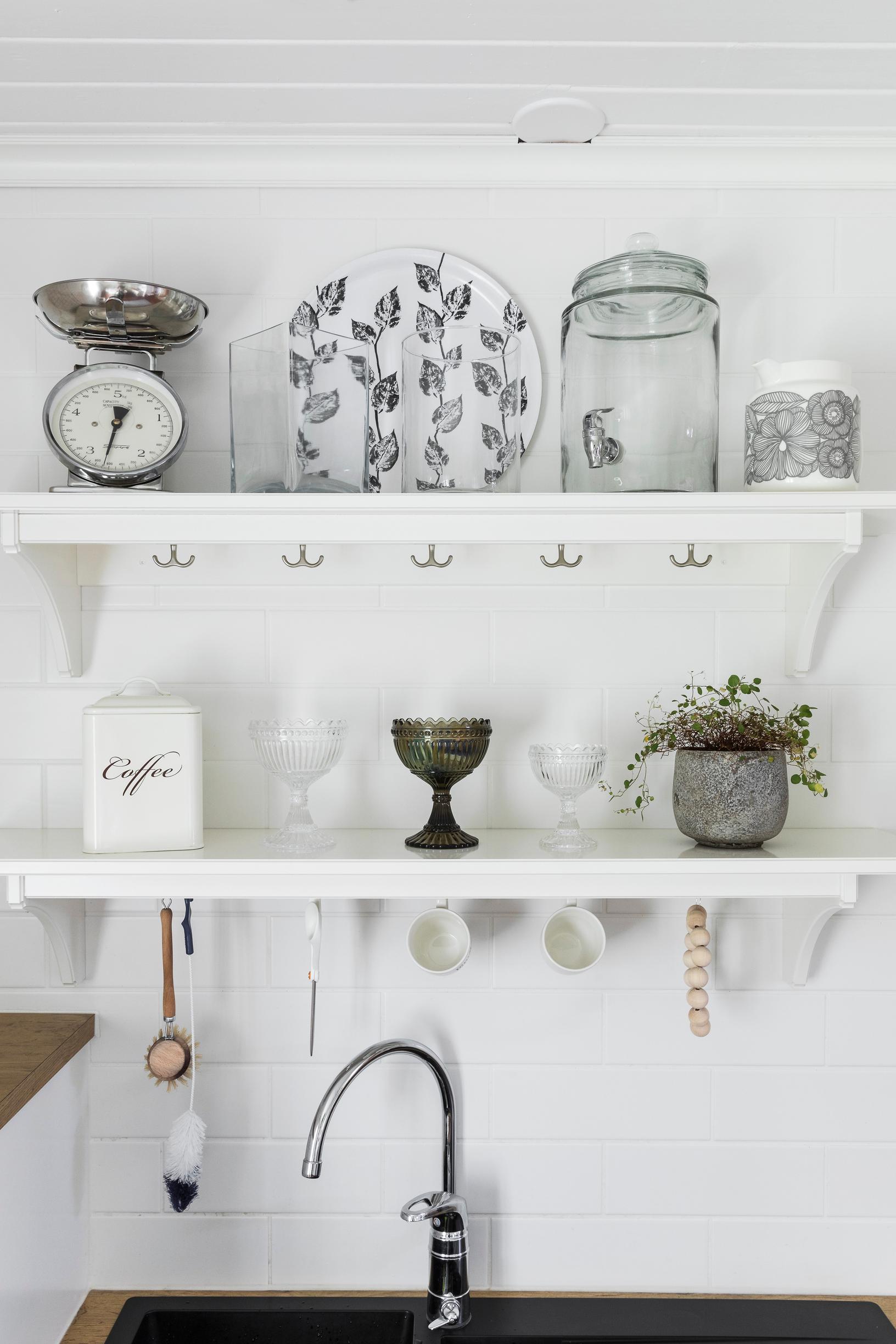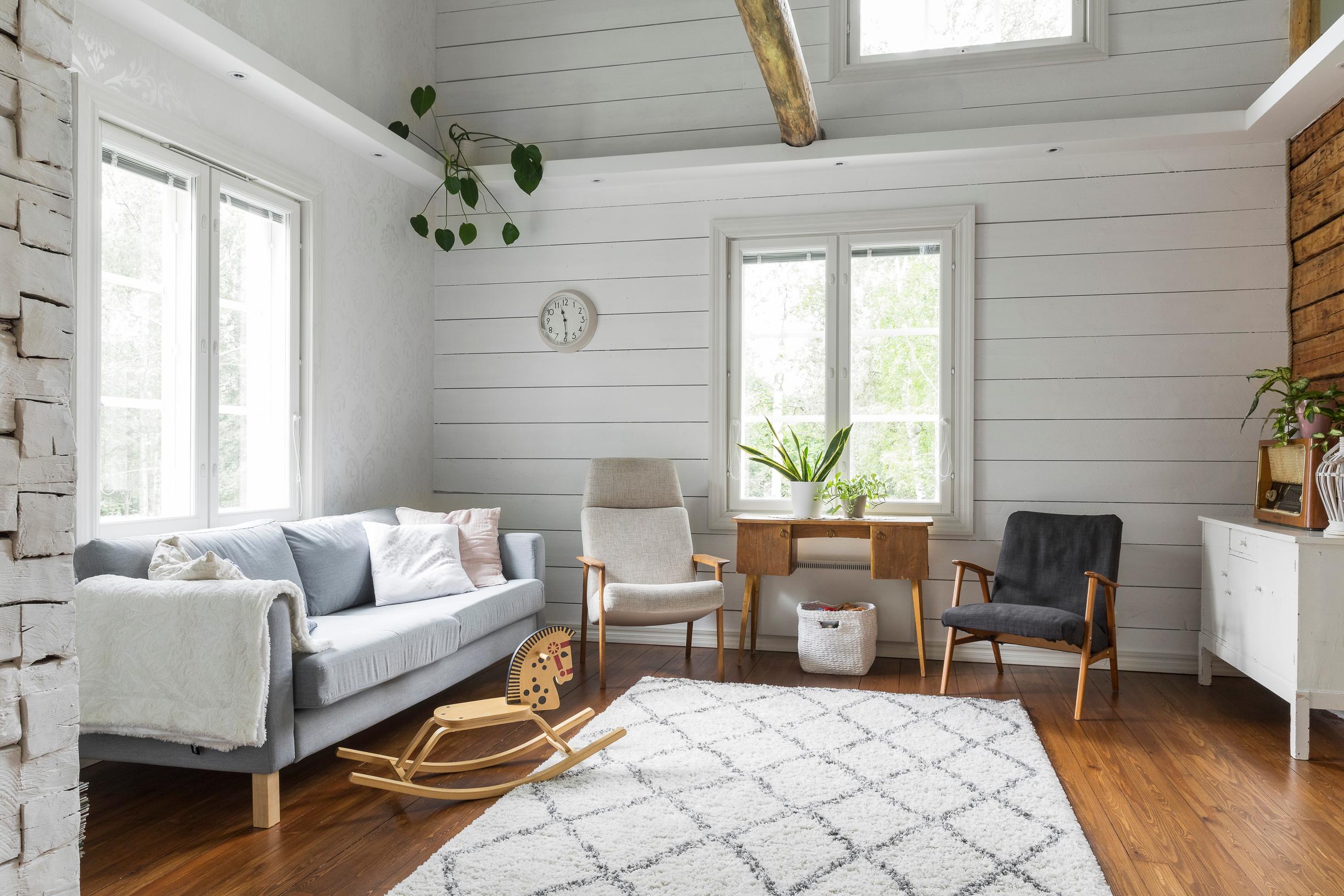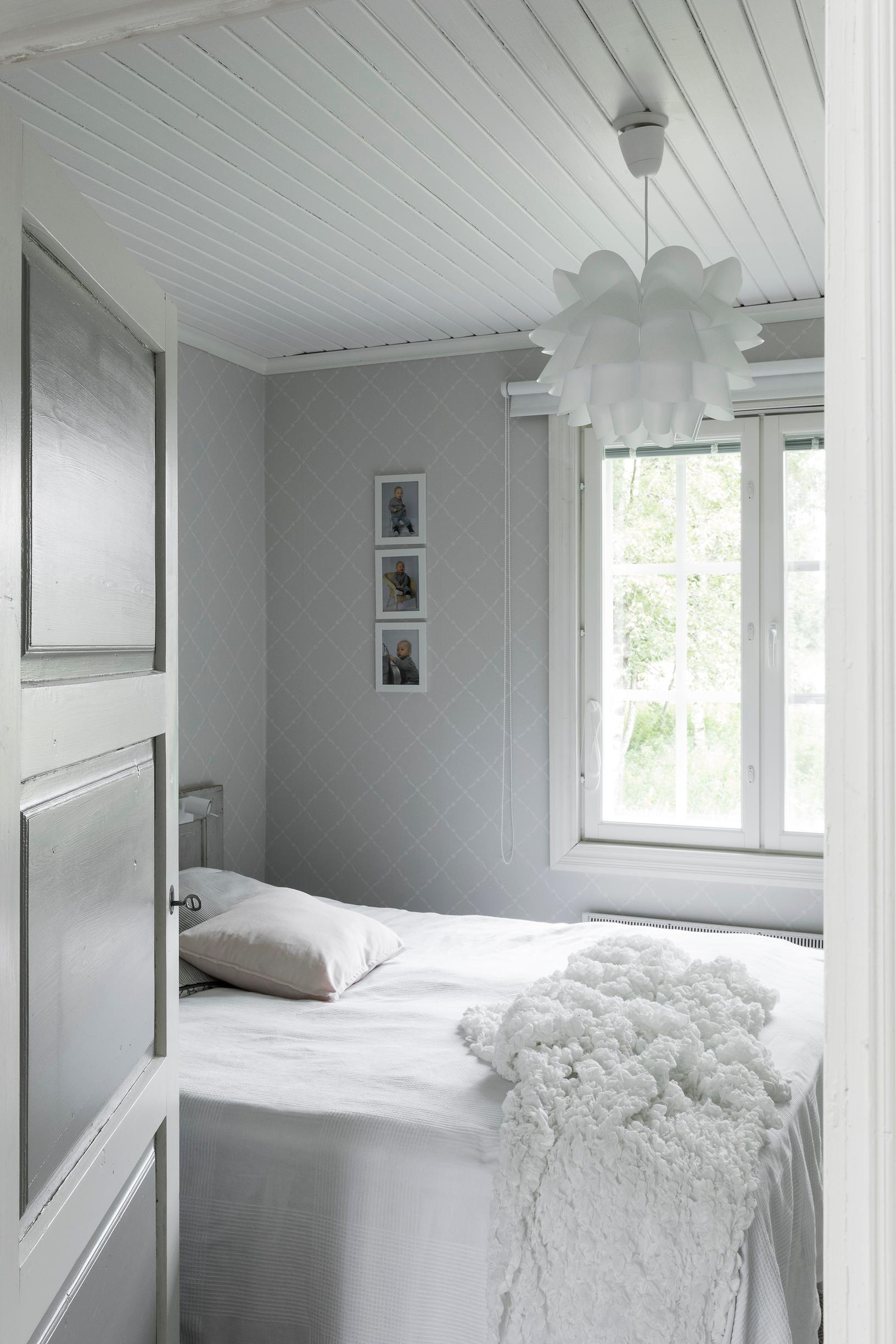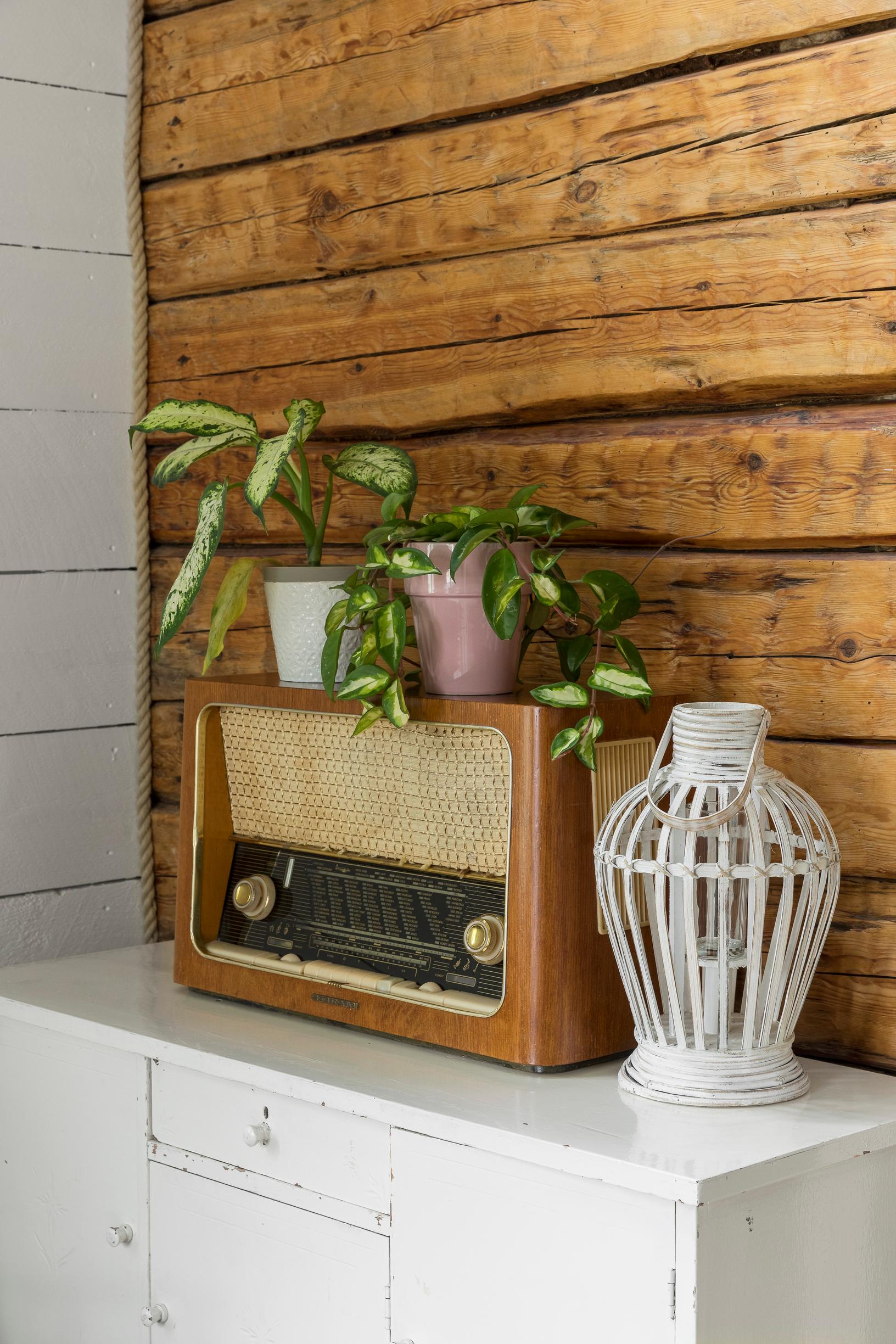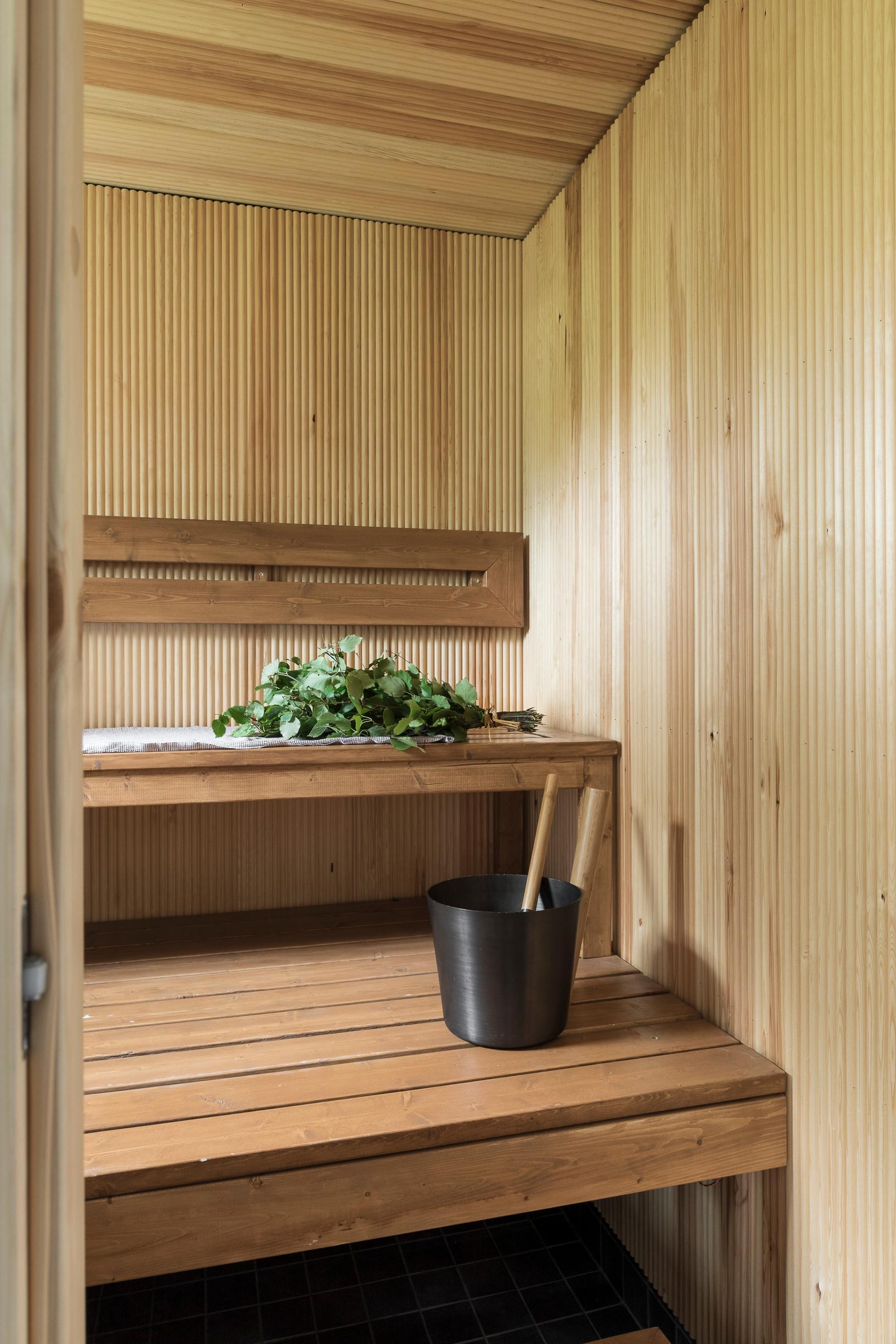
Once-abandoned log cabin became a bright, spacious home: “I got it for cheap, so I wouldn’t have lost much even if there had been unpleasant surprises”
Marko Peltoniemi renovated an old cabin into a cozy home for his family and a space to work on his projects. Many of his renovation ideas came to him while driving his truck.
Truck driver Marko Peltoniemi wanted his own house, because living in a rowhouse in the center of Kannus meant he couldn’t spend his free time tinkering with boats and engines or doing carpentry whenever he wished. For a year, he searched for a single-family home in the countryside, until he came across an online listing. In Kannus, there was a small property abandoned in the 1970s. The family who originally built the cabin had used it as a summer place.
The house looked a bit quirky—like a little granny cottage that had grown wider instead of longer.
“It was fall when I came to see the place. A path led to the house, and the yard was full of shrubs. I figured it would be a great base for a project,” Marko recalls.

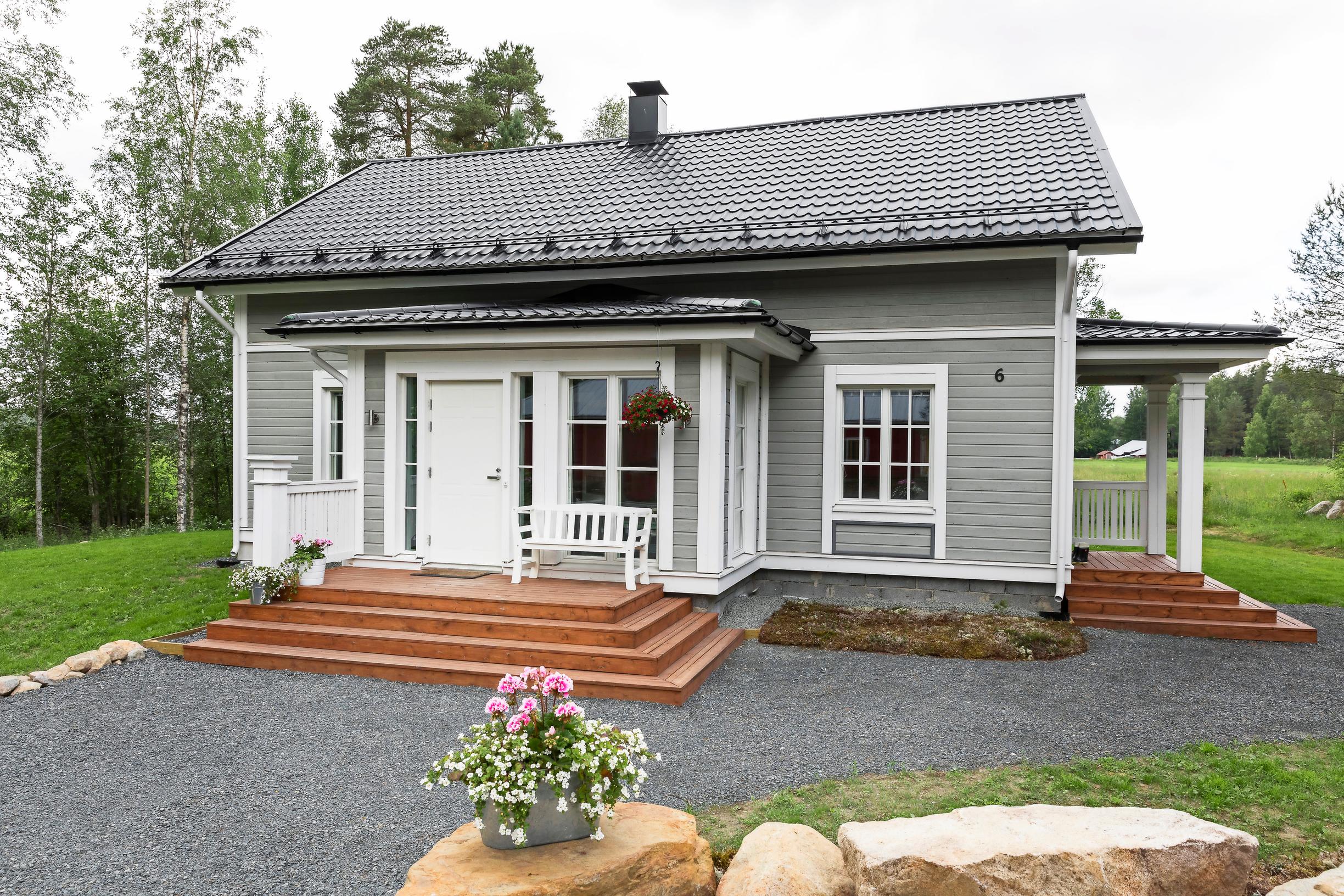
A yard sloping down to a stream
The cabin was built in the 1930s using logs from an old drying barn. In the 1950s, it was expanded with a bedroom and a kitchen. Over time, it acquired some features typical of a post-war home.
Marko, in his late twenties at the time, revisited the house a couple more times. He saw the bottom logs were sound and figured the rest were too—even though he couldn’t check behind the paneling.
“I thought that if I found rot, I’d just fix it. I got it for cheap, so I wouldn’t have lost much even if there had been unpleasant surprises,” he recalls.
What appealed to him most was the open yard sloping to the stream. There was even a sort of sauna building down by the bank. Also, a long storage building bordered the yard—perfect for creating a proper workshop.

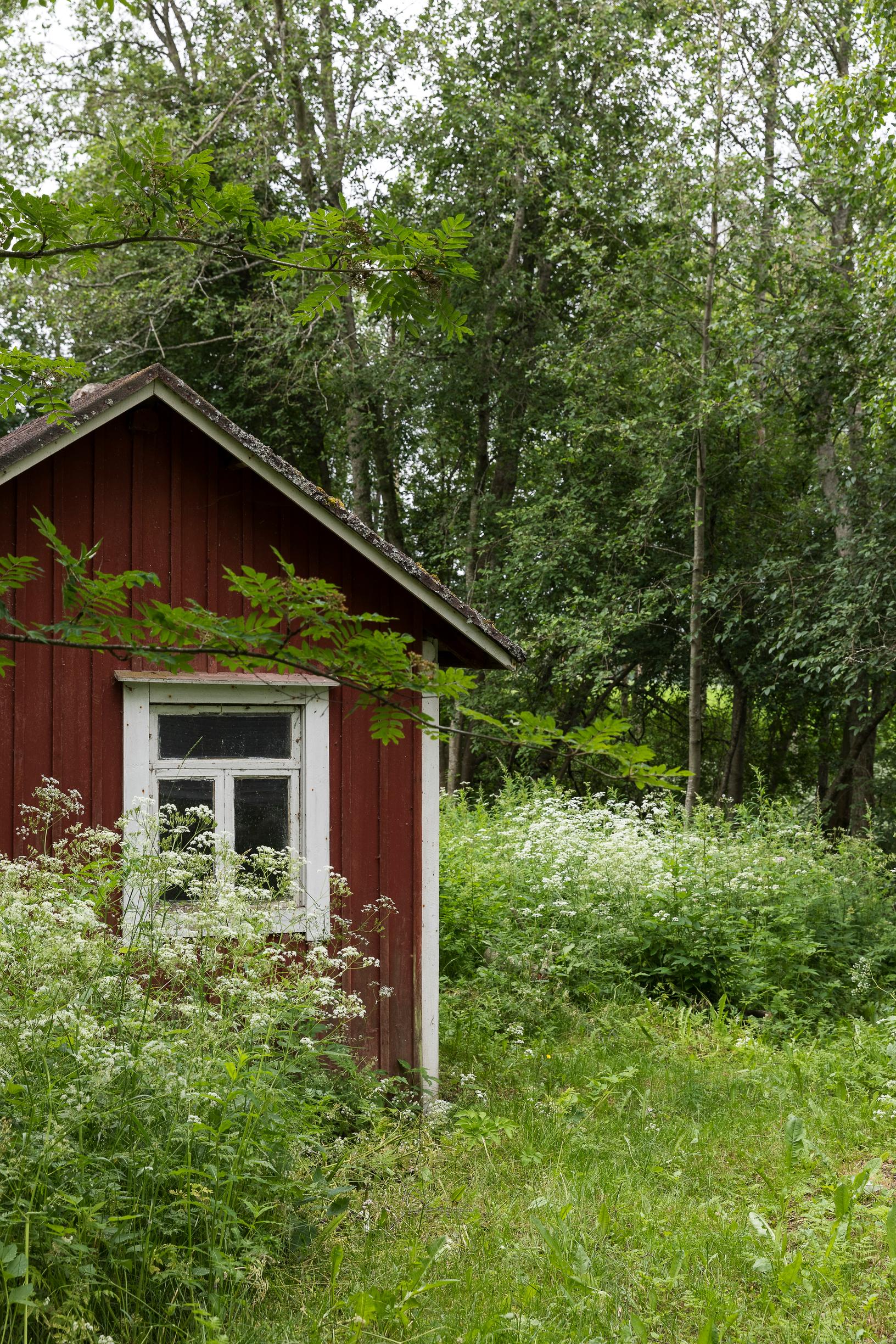

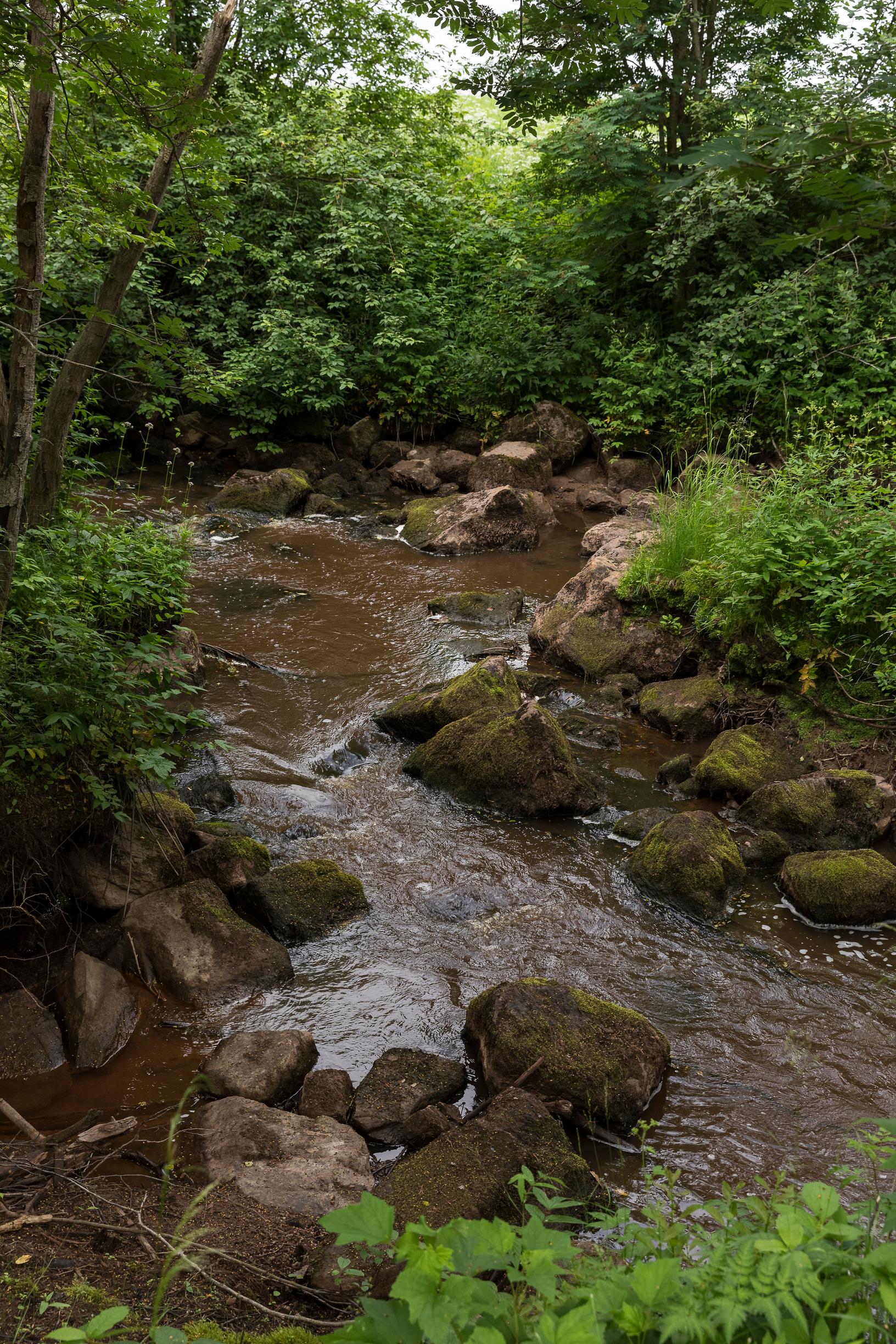
Updating to modern needs
From the start, Marko knew the roughly 50-square-meter (540-square-foot) structure had to be quickly updated to meet today’s needs. It had electricity but no water hookup. A bathroom, toilet, and sauna were necessary, requiring an expansion.
“On the other hand, the house was practically made for expanding sideways, since the previous addition had gone deeper. Now it’s much more balanced than before,” he notes.
They began laying the foundation for the extension right away, completing the footing before winter. Marko sketched his plans on paper, and a friend in construction drew up the permit-ready designs.
In practice, he solved countless renovation dilemmas as they arose. He even built the upstairs rooms first, and only afterward did they finalize the official plans. On one side, Marko designed rooms and storage under a roofed section, leaving the other side open.
“But the structural work was all done by the book. We got those permits in advance,” Marko stresses.

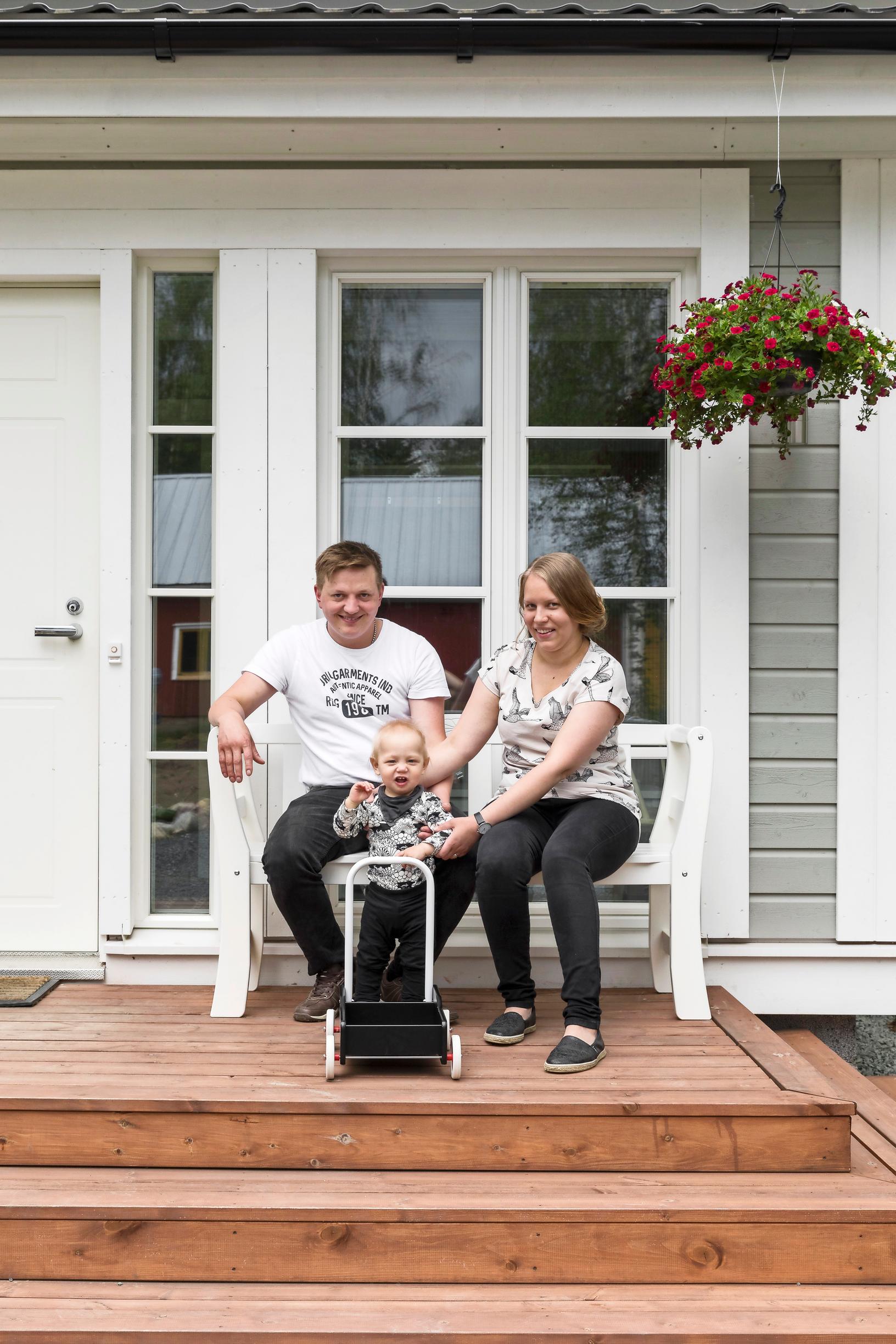

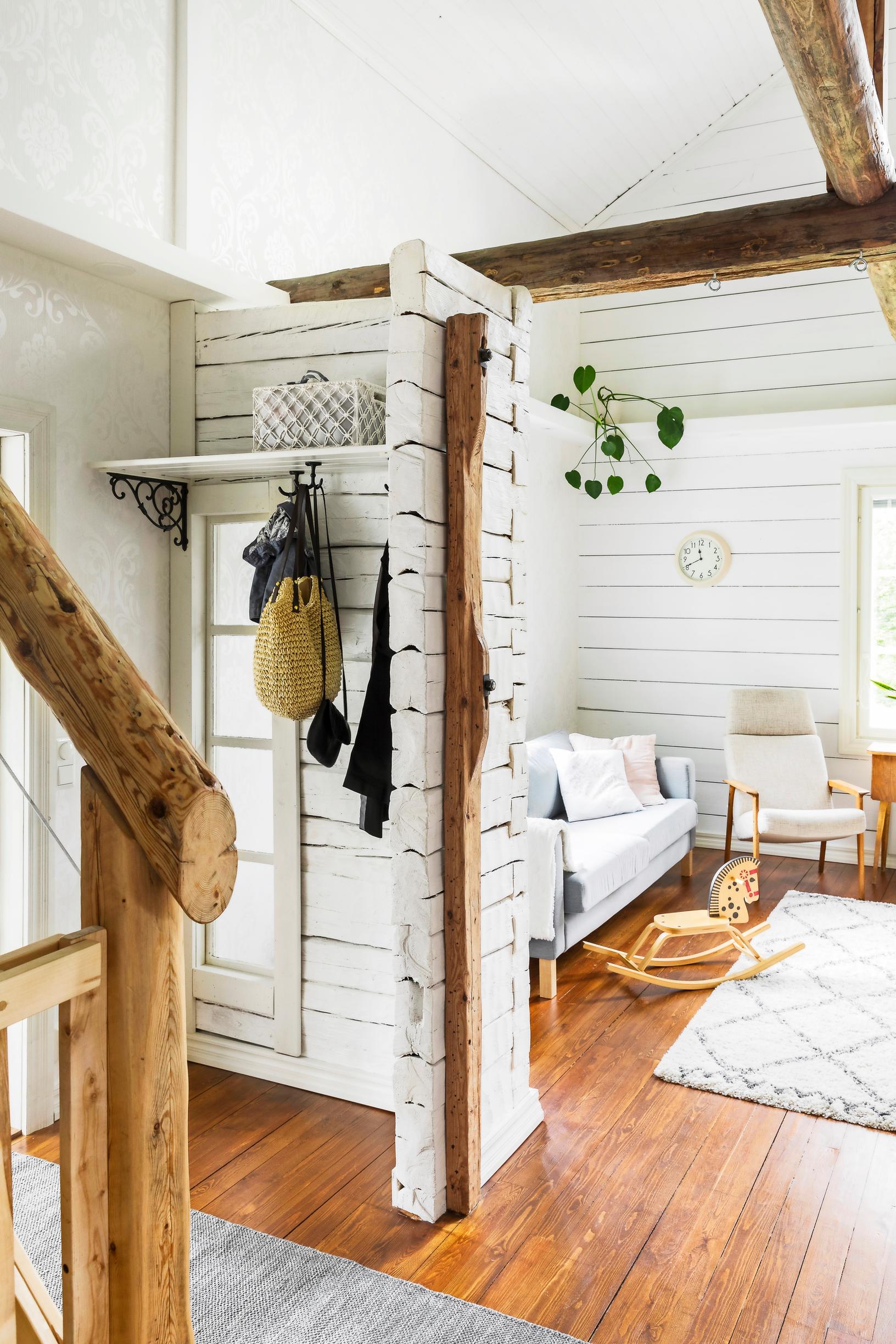

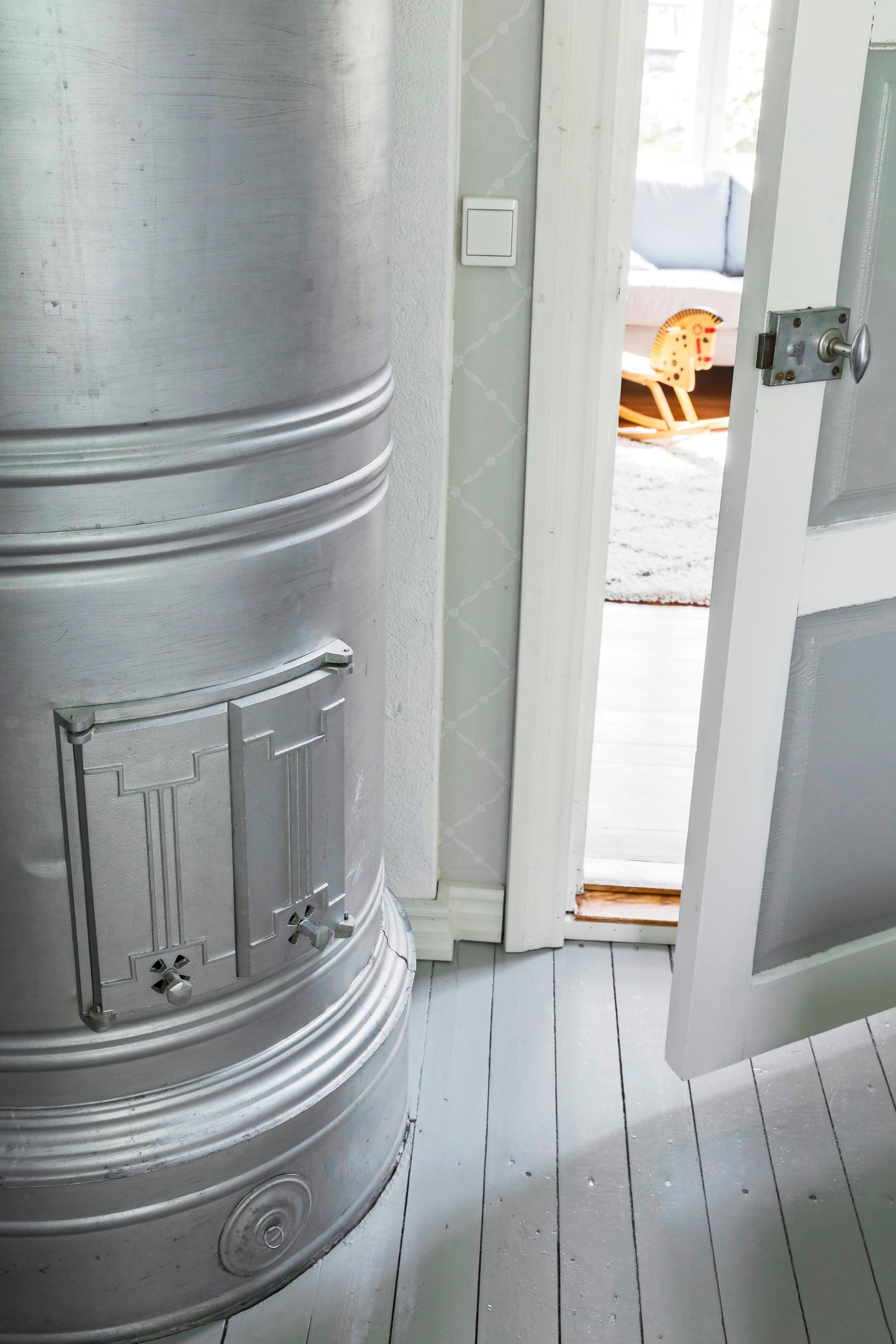

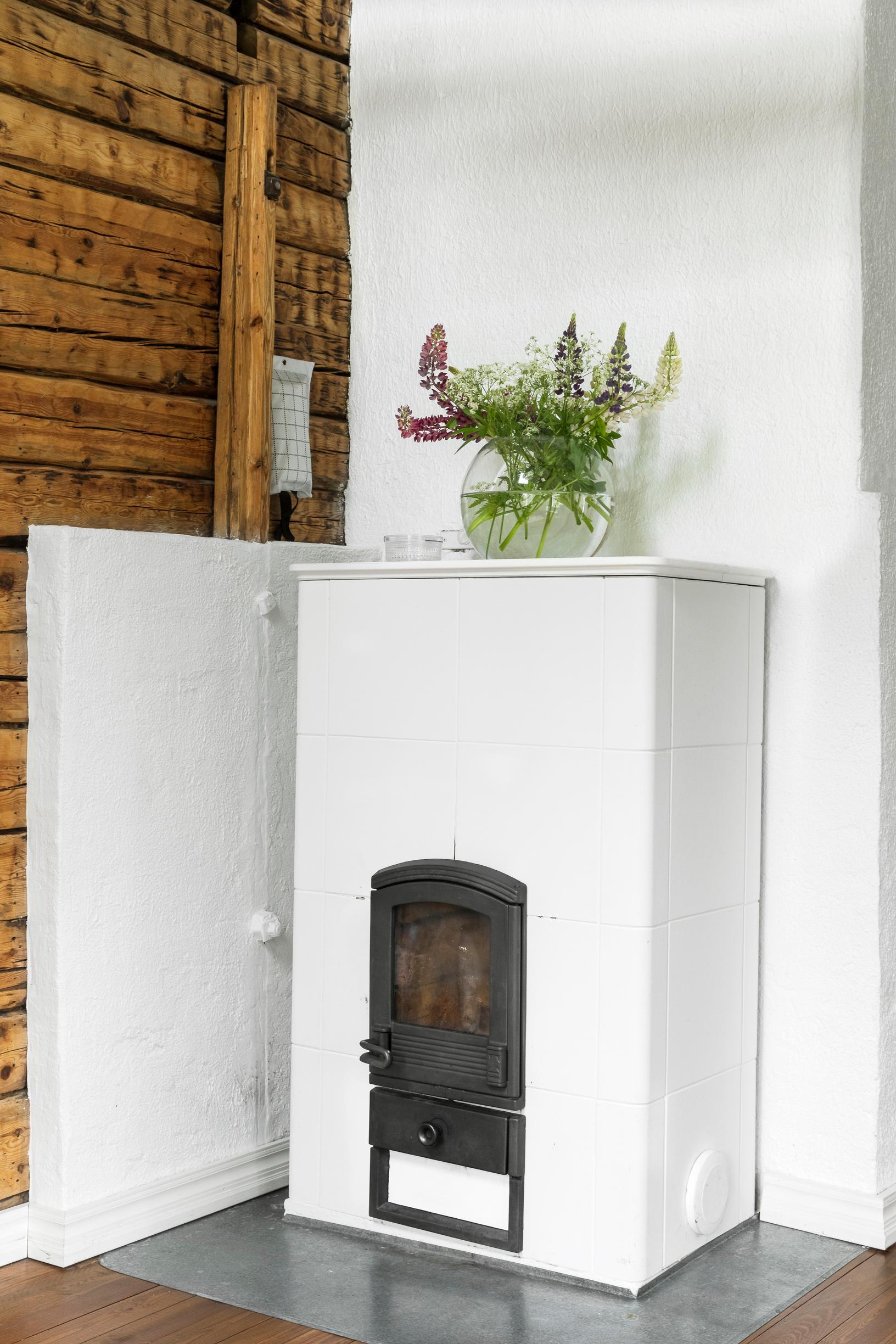
Downstairs ceiling height increased
The new section’s frames were assembled on the ground, then lifted into place as prefabricated pieces. Marko reluctantly agreed to replace the entire roof.
“It had a well-preserved, machine-seamed metal roof you can’t really find anymore. But it would’ve inevitably been a different color than the new addition’s roof,” Marko explains.
On the upside, redoing the roof allowed better insulation in the old attic and a higher ceiling. Now, downstairs has as much as six meters (20 feet) up to the rafters because the intermediate floor was removed. Before, it was only a couple of meters.
Replacing the roof was the biggest individual project, Marko says. Hauling the sheets around was slow work and took most of one winter’s free time. Whenever he stopped, he had to secure the roof with tarps.

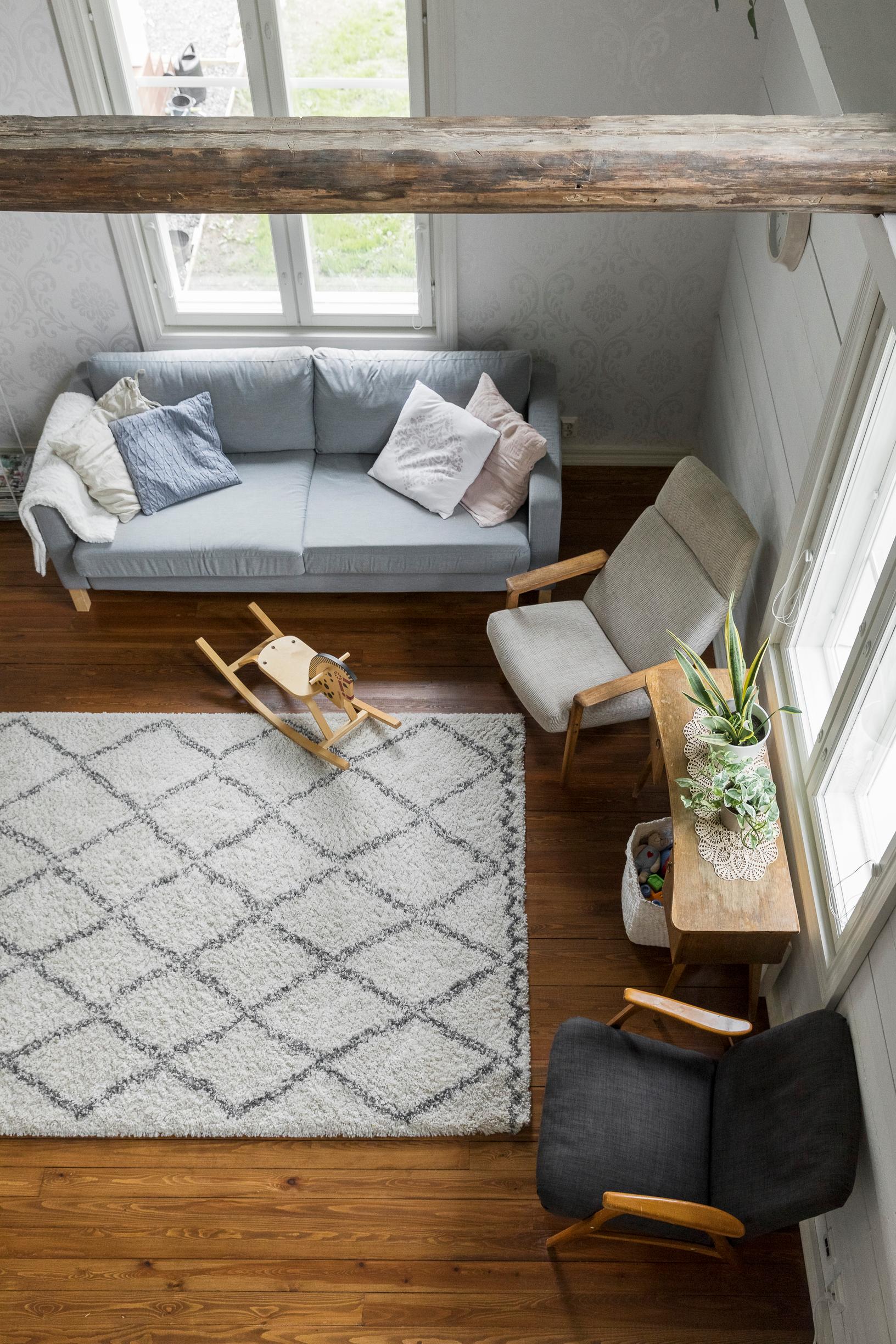

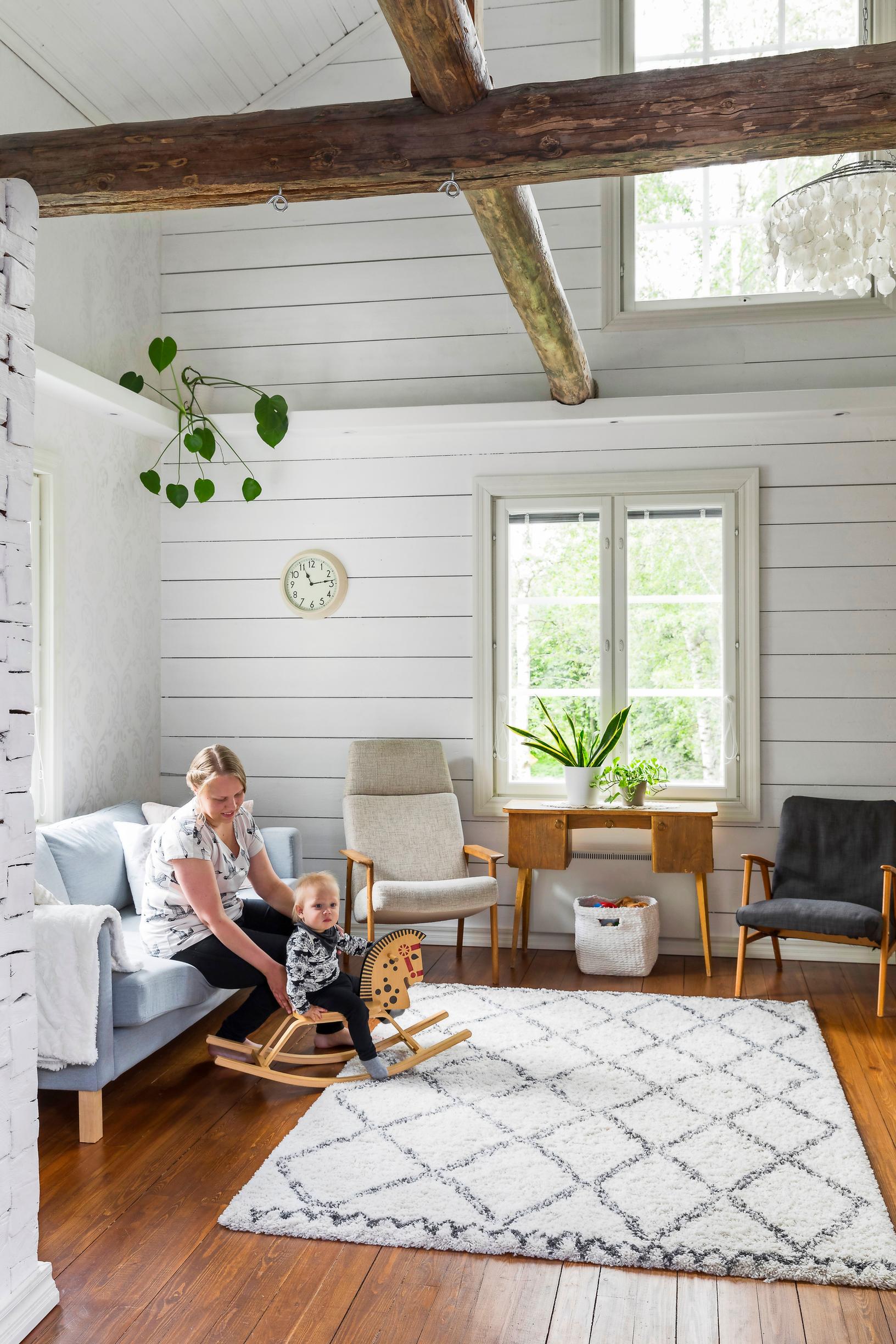
Back problems slowed the renovation
In 2015, Marko met Henni. The two fell in love and got engaged. When Henni first saw the unfinished house, she shook her head.
“I thought, ‘Oh dear, will this ever become anything?’ The place looked like it had blown up—parts of everything were torn away,” Henni recalls.
Marko admits that in 2014, progress was sometimes slow.
“I wanted to work at my own pace, without stress. Sometimes months would pass when I’d just drive by on my way to go boating,” he says.
His back issues also played a part. Still, his doctor said he could use small machines and advised against staying in bed. If Marko could get someone to help, he’d head to the site.

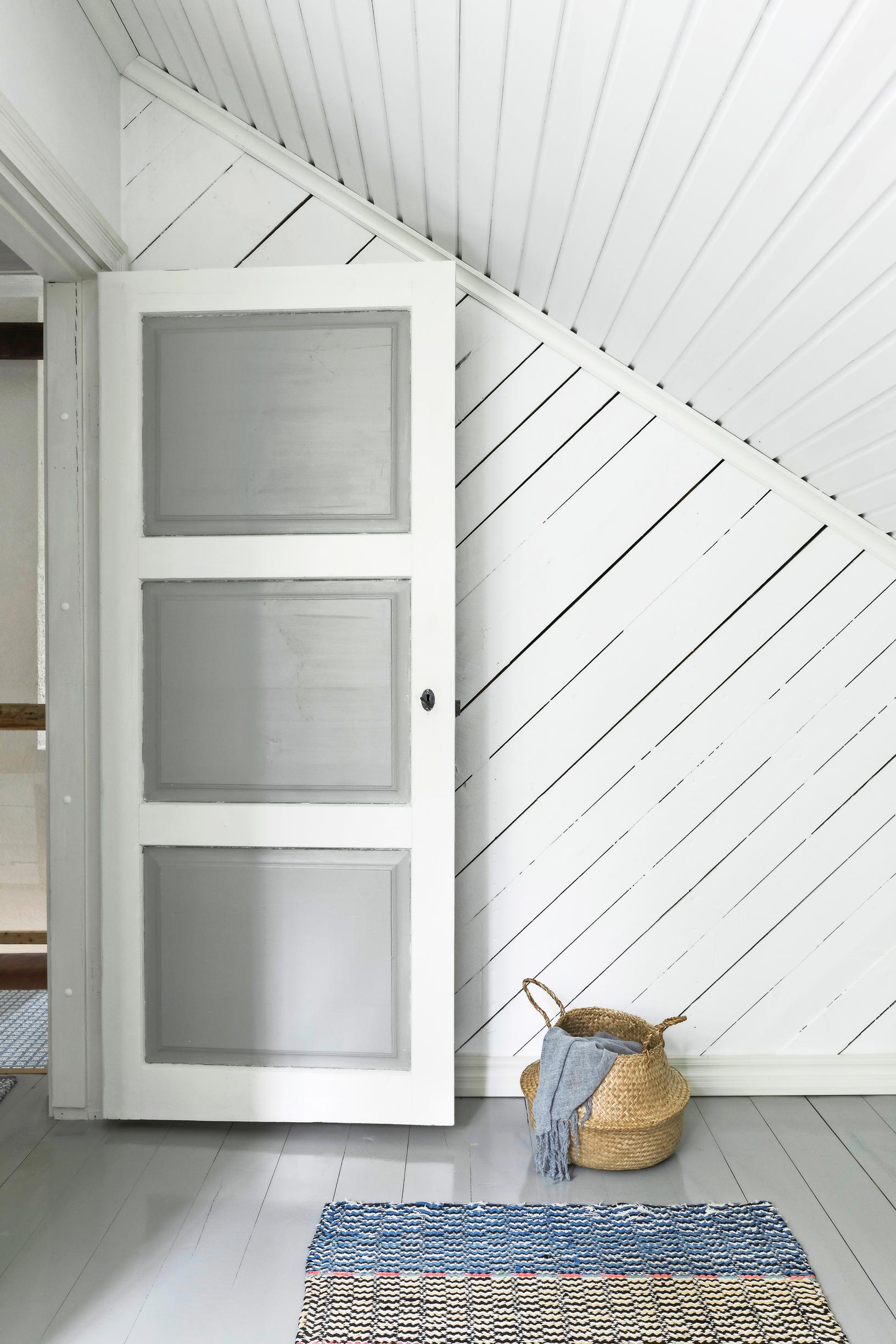

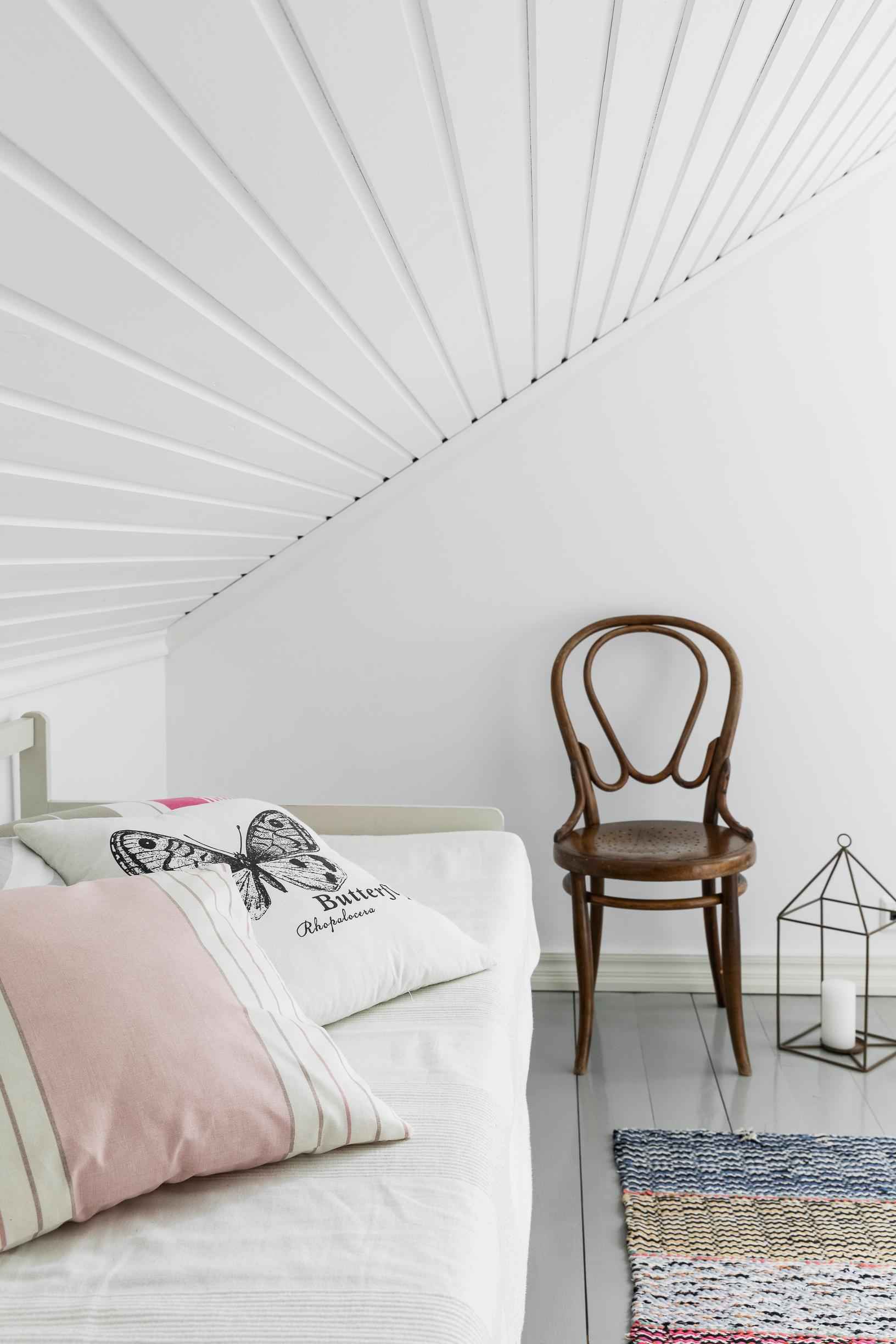

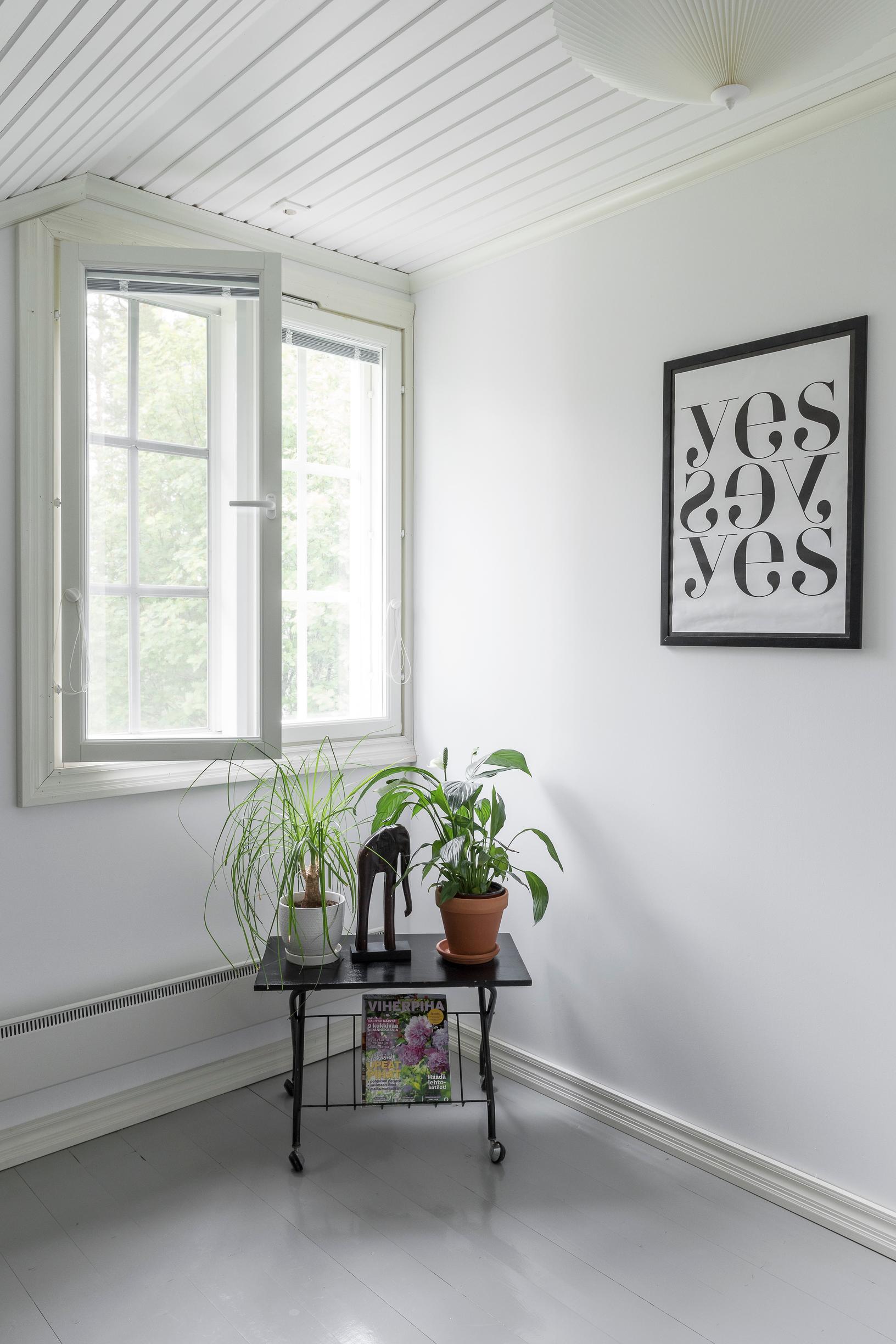
Removing the paneling revealed sooty logs
A professional redid the entire electrical system. Marko tackled everything else, including plumbing. A pro later confirmed the connections.
He dreamt up most of his ideas while driving his truck. The stairs stood in a cramped spot next to the external entry. Marko welded a steel frame that changes direction halfway up, and a friend painted it black. The steps are made with different shades of birch, and the railings are from dismantled wall beams.

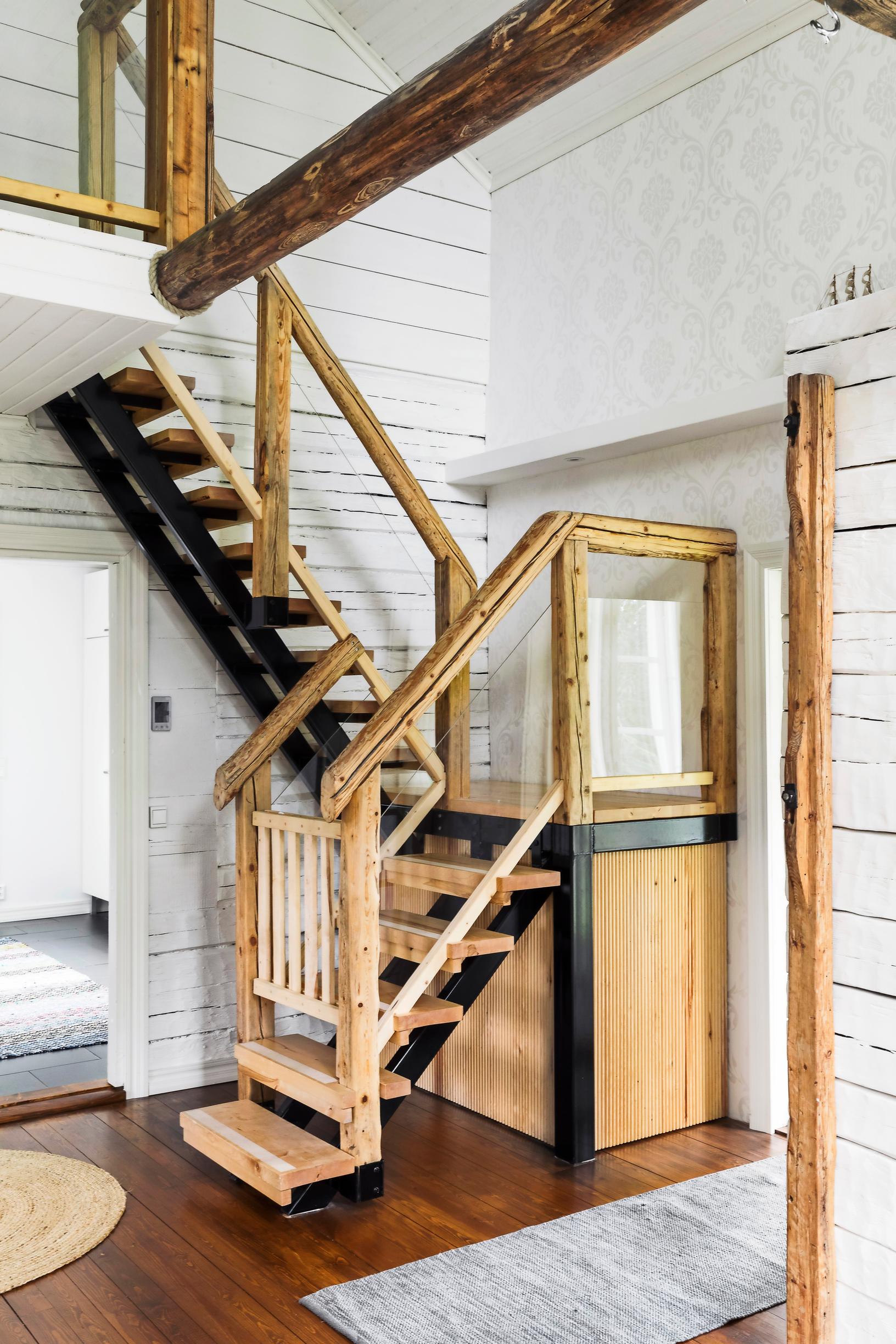

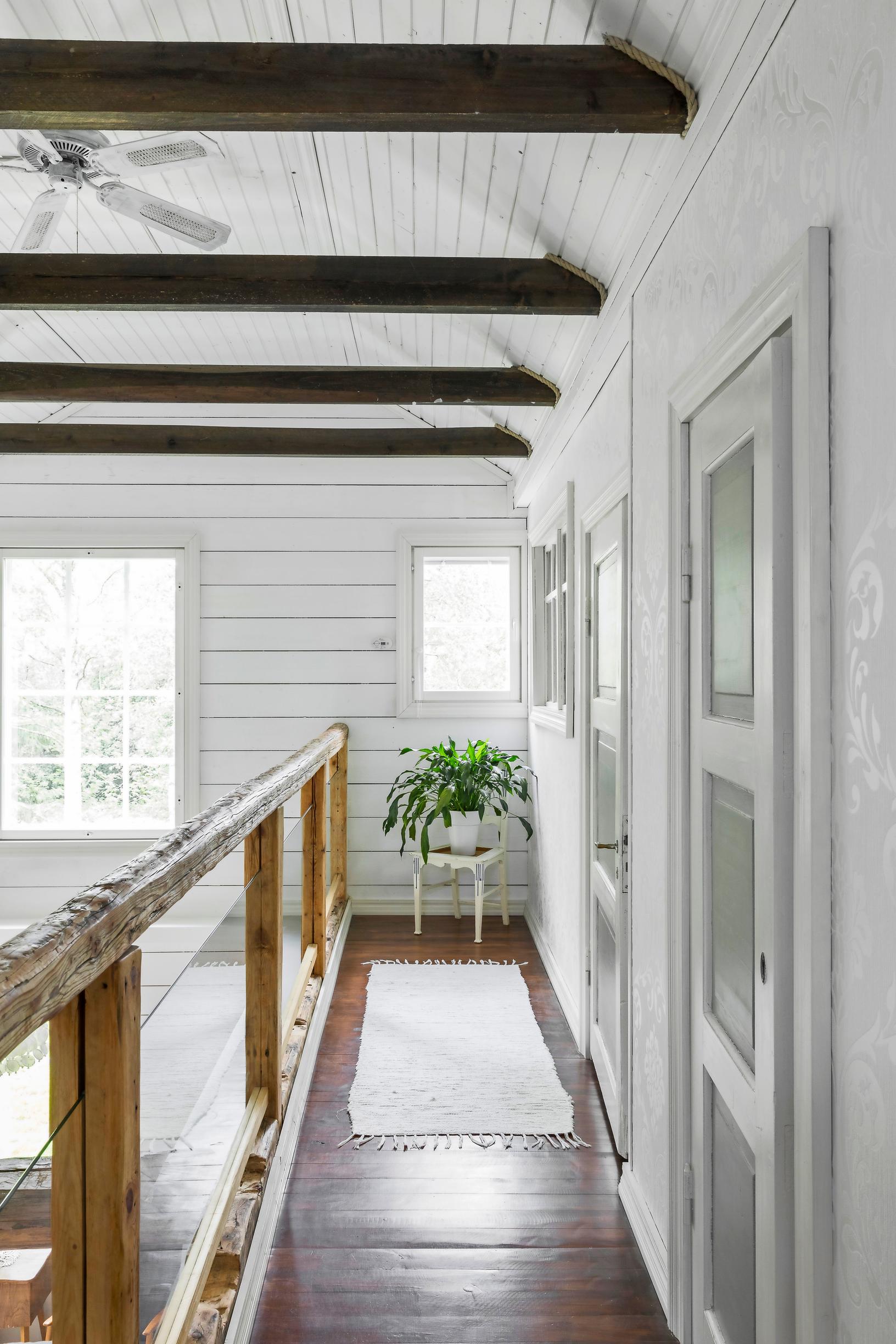
They waited to open the wall between the new section and the old one until the new side had heat. Beneath the cardboard and paneling, they found sturdy but sooty logs that had once been part of a smoke-drying setup for straw and grain.
Marko treated logs destined for paint using a steel wool disc and exposed-wood logs with a separate disc that created a fuzzy surface. Then he polished them with a wooden buffing attachment, giving them a gently aged look.
He transformed the newly opened log wall into a divider between the living room and kitchen, replacing the old doorway with windows from an unused porch.
They only updated the kitchen flooring, laying the same parquet used in the living room to level both floors. The couple simply painted the older boards in the downstairs bedroom.

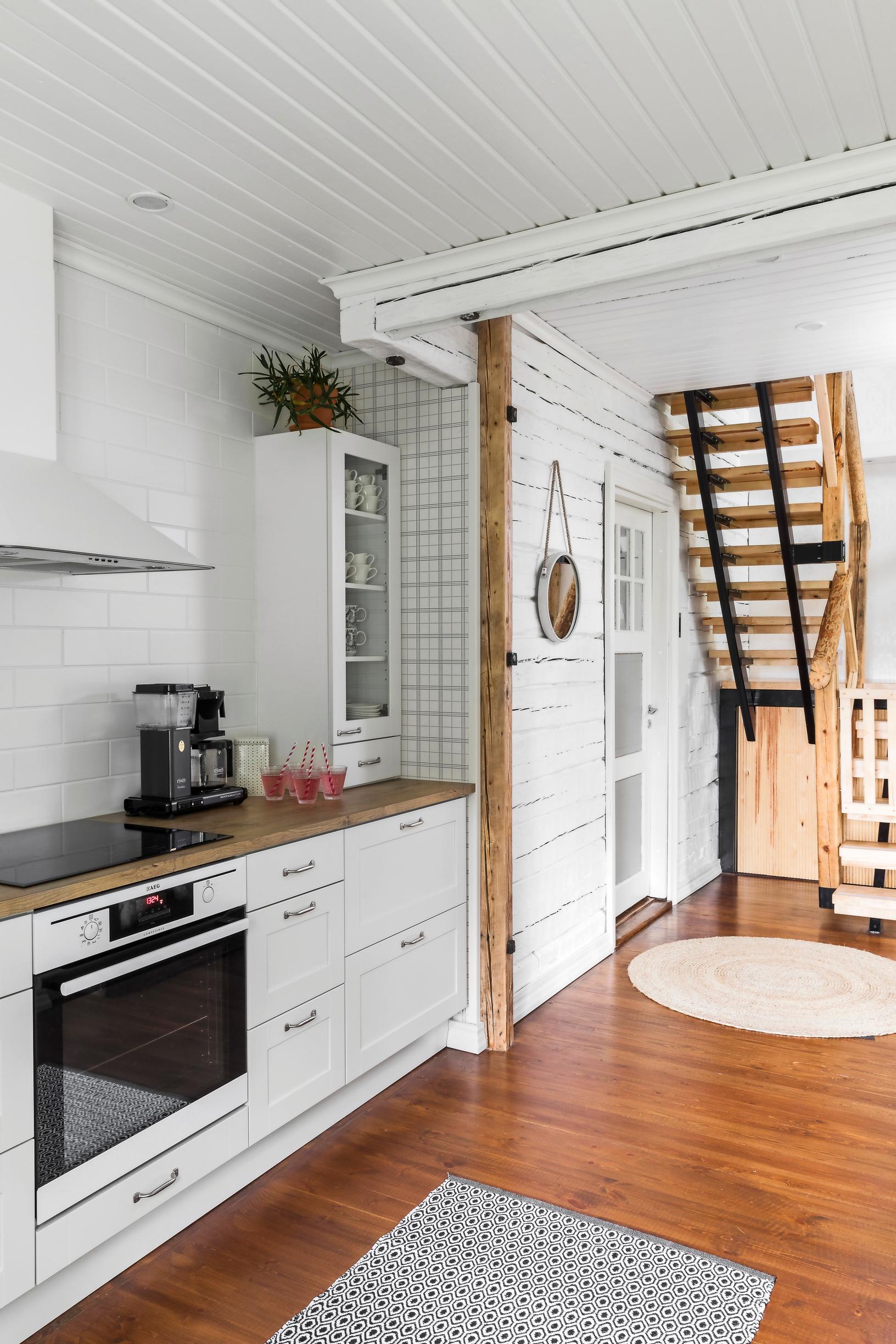

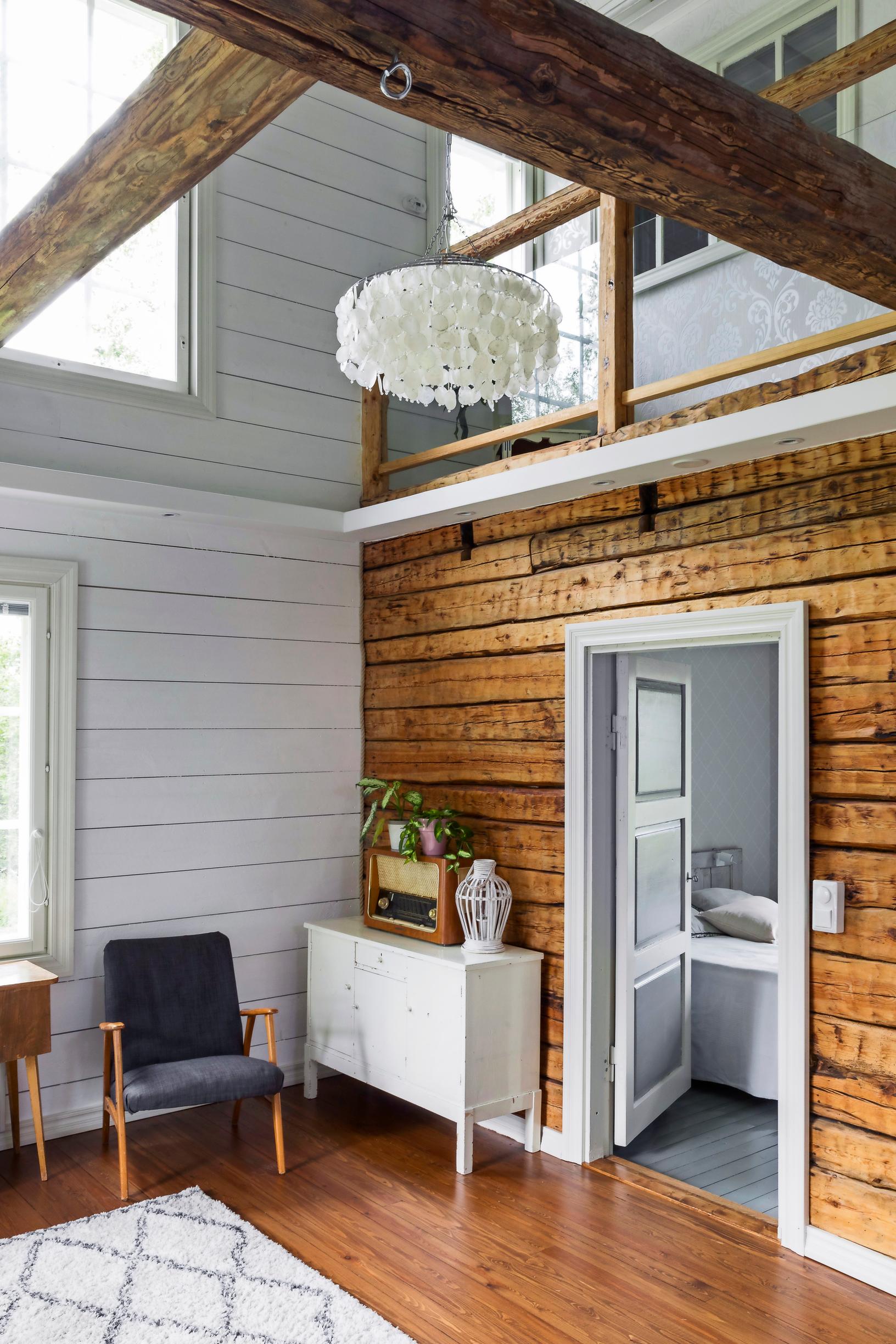
Saving money with recycled materials
Marko saved money by buying bargain lots and storing them in the old grain warehouse on the property. Even now, it’s stocked with dismantled and purchased lumber, windows, and insulation, ready for new projects.
“Once, I saw workers finishing up at a construction site. I went in and said, ‘I’ll buy the remaining insulation,” he recalls.
Next, the couple wants to rescue the waterside sauna from its neglected state and build a gazebo. Any left-over wood will become firewood.
“We’ve got all these tools now, so I doubt we’ll ever run out of things to do,” he jokes.
There’s also more time now for hobbies—the real reason Marko started this project. He shows a photo of a wooden boat waiting by the shoreline. The family is heading out again soon.

